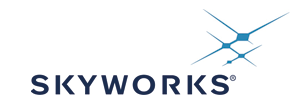About The Technology
DRM has excellent sound quality plus the ease-of-use that comes from digital transmissions. The improvement brought by DRM in the AM bands is immediately noticeable, and DRM in the VHF/FM bands removes the fading that mars FM reception. DRM can be used for a range of audio content, and has the capacity to integrate text and data. This additional content can be displayed on DRM receivers to enhance the listening experience.
DRM in AM bands uses the existing AM broadcast frequency bands and is designed to fit in with the existing AM broadcast band plan, based on signals of 9 kHz or10 kHz bandwidth. It also has modes requiring only 4.5 kHz or 5 kHz bandwidth, and modes that can take advantage of wider bandwidths – 18 kHz or 20 kHz – allowing DRM to operate alongside AM transmissions in every market of the world. DRM in the VHF/FM bands occupies 100 kHz channels.
The DRM system uses COFDM (Coded Orthogonal Frequency Division Multiplex). This means that all the data, produced from the digitally encoded audio and associated data signals, is shared out for transmission across a large number of closely spaced carriers. All of these carriers are contained within the allotted transmission channel. Time interleaving is applied in order to mitigate against fading. Various parameters of the OFDM and coding can be varied to allow DRM to operate successfully in many different propagation environments – the selection of the parameters allows transmissions to be planned that find the best combination of transmit power, robustness and data capacity.
The DRM system uses MPEG audio codecs to provide high quality at low data rates. Extended HE-AAC and HE-AACv2 are available.
Listen to xHE-AAC
DRM Transmissions below 30 MHz
The DRM standard used in the AM bands (also referred to as DRM30) can deliver FM-comparable sound quality and is specifically designed to utilise the broadcast bands below 30MHz (Long Wave, Medium Wave and Short Wave) which allow for very-long-distance signal propagation.
DRM in AM bands is designed to fit in with the existing AM broadcast band plan, based on signals of 9 kHz or10 kHz bandwidth. It also has modes requiring only 4.5 kHz or 5 kHz bandwidth, and modes that can take advantage of wider bandwidths – 18 kHz or 20 kHz – allowing DRM to operate alongside AM transmissions in every market of the world.
The system allows the new digital transmissions to co-exist with the current analogue broadcasts, and a significant amount of work has been undertaken to quantify the operating parameters that assure mutual analogue and digital compatibility. Hence the changeover from analogue to digital broadcasting can be phased over a period of time, which in turn allows existing broadcasters to spread the required investment to meet any budgetary constraints. Furthermore, unlike some other digital systems, the DRM system has been designed to allow suitable analogue transmitters to be modified to switch easily between digital and analogue broadcasts. This can significantly reduce the initial investment cost for a broadcaster. An additional budgetary benefit is the reduction of transmission energy costs.
For a complete description of DRM in the AM bands please refer to the DRM Handbook
DRM Transmissions above 30 MHz
The DRM standard used above 30MHz (also referred to as DRM+) can operate in Band I, Band II and Band III.
The extension of DRM to the VHF bands ensures that the standard in these bands has the same multiplex and signalling scheme, the same OFDM design (with new parameters) and the same audio codecs.
DRM in the VHF bands is implemented in the standard as robustness mode E. Its spectrum usage parameters are determined from the internationally agreed norms in the FM band (88 to 108 MHz). Therefore, it has an occupied bandwidth of 96 kHz and a frequency grid of 100 kHz.
DRM in these frequency bands provides bit rates from 35 kbps to 185 kbps at SNRs from 2 dB to 14dB and, like DRM, and permits up to four services. It is therefore a flexible solution allowing single or small numbers of audio services to be broadcast together.
Sharing a transmitter and antenna between independent broadcasters, is the latest enhancement of the DRM standard in the FM band II. Current product lines permit up to 6 side-by-side DRM signals, each with configurable power levels, or combinations of DRM and analogue FM signals together. The combining of signals in this way also allows simpler antenna connections to be made.

Broadcasting of as many as six individual DRM signals from a singletransmitter and antenna has been successfully demonstrated (eg. India). One DRM channel carries two to three audio programmes, so ona single transmitter one could broadcast as many as 18 programmes inpure DRM mode. In this scenario each broadcaster, using the same transmitter and antenna, is still in full control of its broadcasts not needing to rely on an expensive third-party operator.
Universal Standardisation
DRM is the world’s only open standard, digital system for long-wave, medium-wave and short-wave and the VHF bands, including the FM bands, with the ability to use existing frequencies and bandwidth across the globe.
DRM related specifications and standards are published by ETSI, the ITU and on the DRM Consortium homepage.
ETSI Standards
The DRM System Specification has been approved and published by the European Telecommunications Standards Institute (ETSI). The standard has evolved from the original, which covered only the AM bands, to the current version which includes operating modes for all the frequency bands below 300 MHz. In addition, ETSI has published additional specifications that allow contribution and distribution networks to be built, and allow data applications in addition to audio. DRM is also able to transmit data applications designed for the DAB system, enabling authoring tools and receiver decoders to be reused.
ITU Regulation
The DRM Consortium has worked closely with the ITU and administrations to ensure that DRM can be deployed globally. ITU-R has published system recommendations and planning parameter recommendations for DRM, for use in the AM bands and VHF bands, respectively. In addition, digital transmission is often authorised in place of analogue transmission provided that no greater amount of interference will be generated.
The most relevant ITU-R Recommendations are listed below:
- ITU-R BS.1514 – System for digital sound broadcasting in the broadcasting bands below 30 MHz
- ITU-R BS.1615 – “Planning parameters” for digital sound broadcasting at frequencies below 30 MHz •
- ITU-R BS.1114 – Systems for terrestrial digital sound broadcasting to vehicular, portable and fixed receivers in the frequency range 30-3 000 MHz
- ITU-R BS.1660 – Technical basis for planning of terrestrial digital sound broadcasting in the VHF band
DRM Specifications
DRM documents are in pdf format. You need to have Acrobat Reader in order to view them. You can download Acrobat Reader here.
Please click on a file to download:
DRM System Specification:
DRM Data applications directory:
DRM regional text profiles:
Contribution and distribution:
Data applications:
Specifications maintained and published by the DRM Consortium:
Standards related to DRM:

















